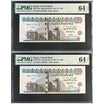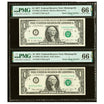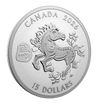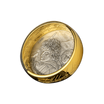As you venture into the numismatic world, you are presented with coins with various finishes that make them stand out. Among these finishes, high relief and ultra high relief help to create some of the most eye-catching designs you encounter.
The question is: what are they?
Definition
The term 'high relief' refers to art that is raised outward three-dimensionally from a flat surface to varying degrees.
Therefore, high relief coins have a three-dimensional design compared to a standard coin. The image is raised to allow for more detailed executions of the design. Similarly, ultra high relief coins have their images raised even higher, allowing the design to be felt on an elevated level.
With an understanding of the mechanics behind these coins, it's also important to acknowledge the extensive history behind these magnificent sculptures.
History: The Ancient Greeks
The ancient Greeks are responsible for the creation of high relief coins, where excessive details were minted on the coins by hand. The coins have proven to have passed the test of time, and continue to be the most desirable among avid collectors. These coins are highly sought after by collectors because the high relief effect helps retain their beauty longer.
As minting gained more traction, it became less practical for high relief coins to be minted by hand. As a result, machines were created to allow for more efficient production of uniform coin designs. However, because less high relief coins were being minted, the designs became flat, helping with accessible stacking and storage of higher quantity of coins. Nevertheless, high relief coins never lost their appeal and value.
History: High Relief Double Eagle Coin
As production increased, minting gained avid admirers, one of which included President Theodore Roosevelt, who is responsible for bringing high relief coins back into the spotlight. Roosevelt's goal was to bring high relief minting into the modern day, and through their artistic abilities the United States could produce ones that the country could be proud of.
In 1907, he initiated the first production of the Ultra High Relief Double Eagle, designed by sculptor Augustus Saint-Gardens. Only 25 of the coins were produced at the time because of the difficult minting process. Over the years, the U.S Mint continued production of other high relief coins, however, due the difficulty of the minting process, the production was switched to a lower relief.
History: Modern Day
It was in 2009 when the U.S Mint decided to re-mint the Ultra High Relief Double Eagle in 0.9999 fine gold once again, proving their success with modern mint engineering. In 2015, the American Liberty Gold was created with a $100 face value, the highest denomination on a U.S. minted gold coin, and released in ultra high relief finish.
High relief and ultra high relief finish will carry a high price tag, and have proven to be unsurpassed in their quality throughout history. They are valuable investment pieces that delicately carry history in their designs and craftsmanship.


























Leave a comment
This site is protected by hCaptcha and the hCaptcha Privacy Policy and Terms of Service apply.